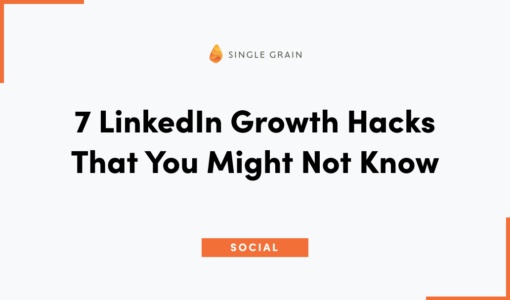Are Newsletters Actually a Profitable Business?
Newsletters have become a popular way for individuals and businesses to share their thoughts and connect with their audience.
But are they really a good business?
In this post, we’ll delve into the potential for success with newsletters, exploring the revenue possibilities and benefits of charging for subscription services.
Top Earning Newsletters Generate Millions of Dollars
According to the PressGazette: Future of Media, the top 27 highest-earning Substack newsletters generate over $22 million annually:
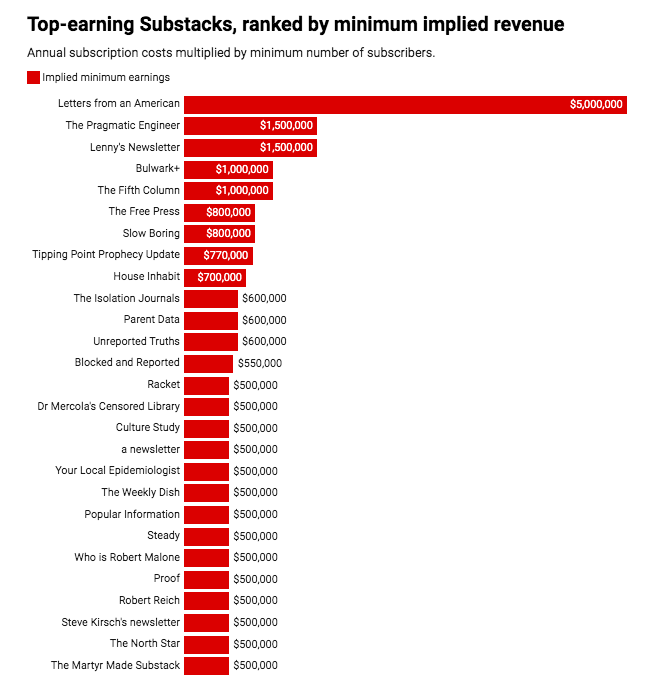
This data shows that people are building significant businesses using Substack, and they are mainly monetizing through subscribers who pay for the service. Newsletters such as “Letters from an American,” “The Fifth Column” and “Unreported Truths” are generating millions of dollars each year.
Substack is an online platform that allows independent writers and podcasters to publish directly to their audience and get paid through subscriptions, most of which are in the neighborhood of $5-10 per month.
It’s free for writers to get started, and if they choose to turn on paid subscriptions, Substack keeps a 10% cut of revenues for operating costs. The platform is mainly hands-off, aside from providing a payment system, customer support, analytics and design infrastructure.

Take a listen to this podcast episode with Substack founder Chris Best to hear the story of how he created this platform.
Related Content: Beyond the Newsletter: You’ve Got Their Email, Now What?
Paid Newsletters Produce More Active Subscribers
Although it might sound counterintuitive, paid newsletters produce more active subscribers compared to free newsletters. Here’s why.
Paid subscribers have a higher level of commitment to the content. When someone shells out cash for a subscription, they are making an investment in the expert content and are therefore more likely to engage with it. They have shown a willingness to pay for the value they believe they will receive from the newsletter.
This level of commitment often leads to higher engagement rates and more action taken on marketing-related content. On the other hand, free newsletters tend to attract a larger subscriber base but may have lower engagement rates since the barrier to entry is lower.
As trust in the media declines to a record low of 26%, more than 90% of Americans subscribe to at least one newsletter.
Paid newsletters offer a modern version of charging for publications such as The New York Times or The Wall Street Journal.
Furthermore, paid newsletters often have a more focused audience. Since subscribers are paying for the content, they are more likely to have a specific interest in the subject matter. This can lead to a more invested community within the newsletter.
Paid newsletters can also offer exclusive content, resources or access to the author, which further incentivizes subscribers to engage with the content.
Related Content: The Fastest and Easiest Way to Increase Your Email Open Rates
Newsletters Offer Multiple Monetization Opportunities
Newsletters can be monetized through various methods, such as subscriptions, ads, and selling products or services.
Here’s a brief overview of each:
- Subscriptions: This is one of the most common ways to monetize newsletters. Subscribers pay a fee to receive your newsletter on a regular basis. You can charge a monthly or annual fee for access to premium content, exclusive updates or other perks.
- Ads: Another way to monetize newsletters is by displaying ads. You can either sell ad space directly to advertisers or use ad networks such as Google AdSense to automatically display relevant ads to your readers. Keep in mind that too many ads can drive away readers, so it’s important to find the right balance.
- Selling products/services: You can also use newsletters to sell products or services related to your niche. For example, if you run a cooking newsletter, you could sell cookbooks, kitchen gadgets or cooking classes.
Overall, the key to monetizing newsletters is to provide value to your readers and build a loyal subscriber base. If you consistently deliver high-quality content and engage with your audience, you’ll be able to monetize your newsletter in a way that benefits both you and your subscribers.
“Lenny’s Newsletter” on Substack is an example of a successful newsletter that provides value to readers by offering unique insights from a former product manager at Airbnb:
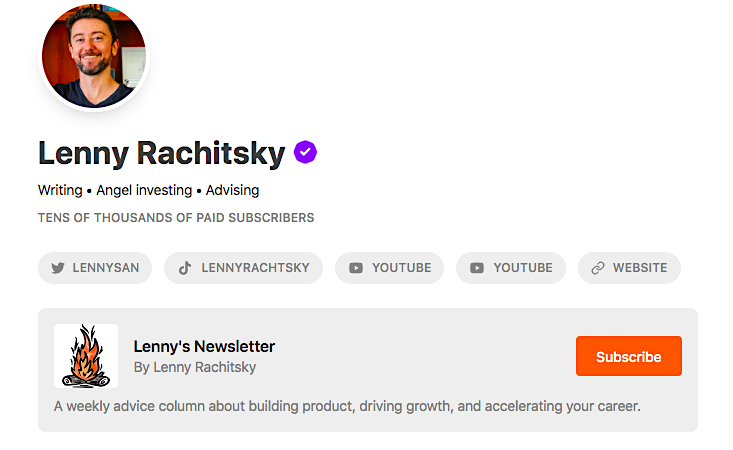
He tackles reader questions about products, business growth, career growth and anything else that readers want to know about. His paid subscribers get the weekly post and an invite to a subscriber-only Slack community (10k+ members). Non-paid subscribers get one free monthly post.
Success Stories of Newsletters as a Business
Here’s what a lot of businesses don’t talk about with newsletters: When you get someone to subscribe and they pay you a little bit of money, then any time you push out anything marking related to them, they’re much more likely to take action on it.
One of the biggest SaaS conferences in the world is SaaStr, and Jason Lemkin, the founder, says that the one thing that’s been most constant for them is that whenever they push out a newsletter, they know they’re going to get sales. Now, that doesn’t mean you can just push out a newsletter every time and say “Buy our stuff!” Obviously, you still have to provide a lot of value in your newsletter.
One of the biggest newsletter businesses right now is The Agora, which generates over a billion dollars in revenue. They own about 20-40 different newsletters and make about $20-50 million each week. That’s a lot of income for a newsletter business.
Other examples include Axios, which did so well it sold for $525 million to Cox Enterprises, its most recent lead investor, and “The Hustle,” the popular newsletter from business and tech media startup of the same name, which sold for about $27 million to HubSpot:

The highest-earning newsletters on Substack and their genre and number of paid subs are:
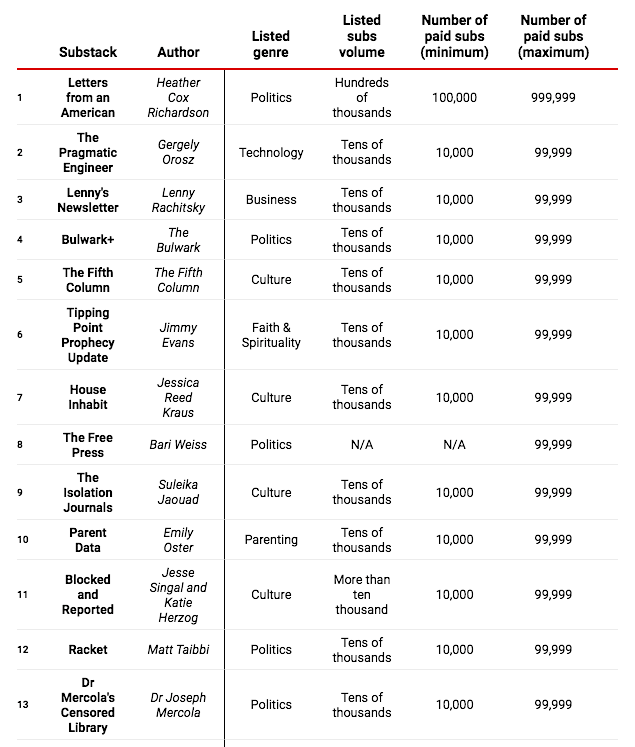
These examples demonstrate that newsletters can be a significant business opportunity when executed correctly.
Related Content: How to Create a High-Value Lead Magnet to Quickly Grow Your Email List
The Importance of Providing Value
While monetizing a newsletter is essential, providing value is equally – or even more – important. Without something of substance in the content, people will soon stop reading and cancel their subscriptions.
When newsletters offer value, subscribers are more likely to share the newsletter with their networks, resulting in a broader reach and potential for more subscribers.
Get inspired by these 10 tips for providing value in a newsletter:
- Exclusive content: Offer unique content that is not available anywhere else.
- Expert insights: Share insights and opinions from industry experts or thought leaders in your field.
- Actionable tips: Provide practical advice and tips that readers can apply to their lives or businesses.
- News and updates: Keep subscribers informed on the latest news and updates in your industry or niche.
- Curated content: Share relevant articles, videos, or podcasts that your readers may find interesting or helpful.
- Case studies and success stories: Share real-world examples of how your advice or products have helped others achieve success.
- Q&A and Ask Me Anything (AMA) sessions: Engage with your readers by answering their questions or hosting live Q&A sessions.
- Community building: Foster a sense of community among your subscribers by encouraging them to share their thoughts, opinions, and experiences.
- Personalization: Use data and insights to personalize your newsletter content based on subscribers’ interests and preferences.
- Discounts and promotions: Offer special discounts or promotions to your subscribers as a way of thanking them for their loyalty.
Working with a newsletter expert such as Matt McGarry can help businesses grow their newsletters. He has helped “The Hustle” and “The Morning Brew” grow their newsletter audiences and can offer valuable insights and strategies to businesses looking to do the same.
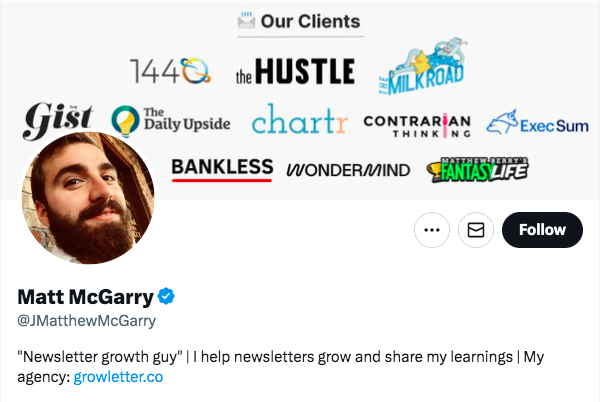
Conclusion
Newsletters can be a lucrative business opportunity when executed correctly. By monetizing through subscription services, ads and selling products or services, businesses can generate significant revenue.
Just remember that providing value to subscribers is crucial to keep them engaged and subscribed. With the right incentives and a focus on providing value to subscribers, newsletters can be a successful business opportunity.
